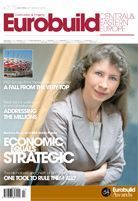While some of the more established economies have their own established certification systems (BREEAM in the UK, DGNB in Germany, LEED in the US), the countries of Central and Eastern Europe have yet to devise their own rating systems, leaving developers to choose from the different tools on offer. The question arises, why is there no universal rating system available, that could be understood by everyone, rather than a bewildering selection of certificates with different methods of assessment?Harmony and disharmonyThere has been much talk recently about the 'harmonisation' of rating tools. But what moves have so far been made in this direction? In 2009 it was announced that a memorandum of understanding had been signed between BRE Global (which runs the BREEAM certification method) and CSTB/Certivéa to try to develop a pan-European assessment together. At the time BRE?s director of sustainability, Paul Gibbon, declared in a press release: This is a huge step forward in aligning






























































